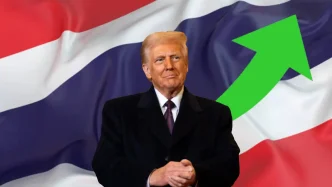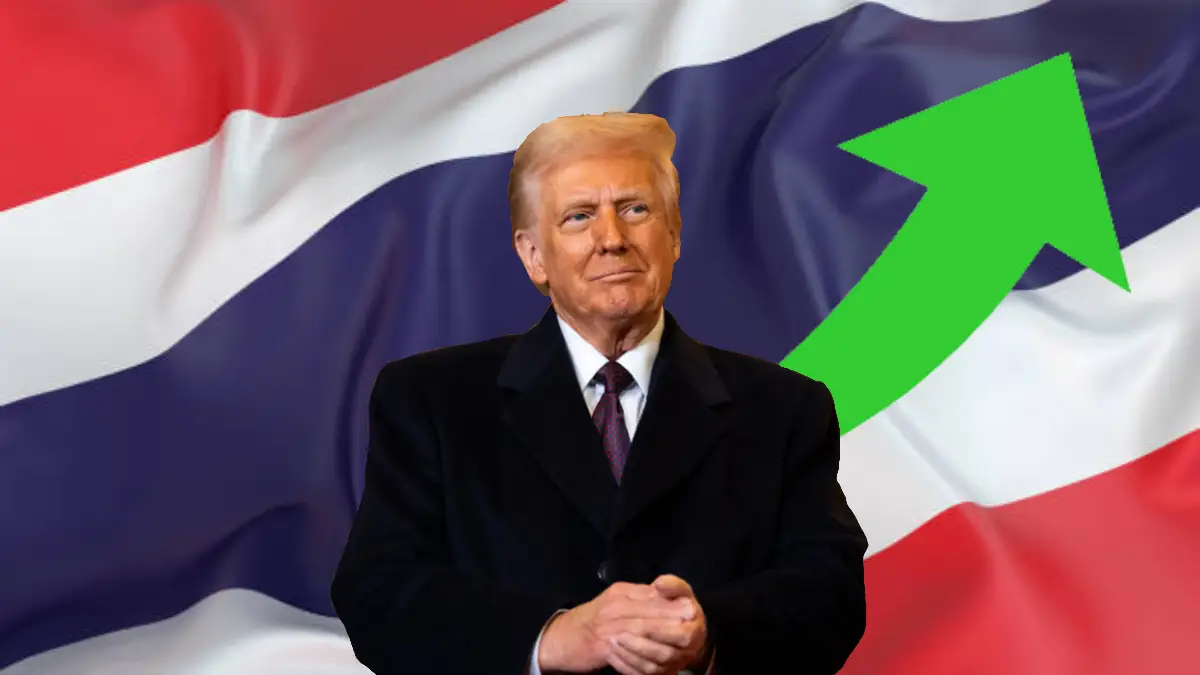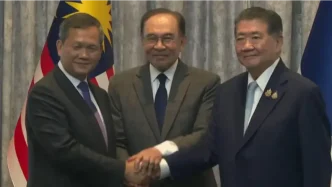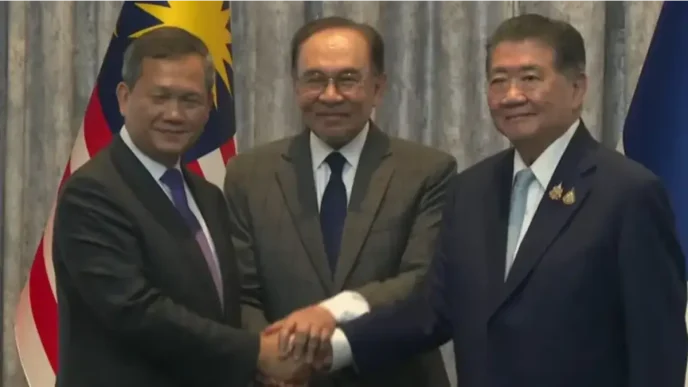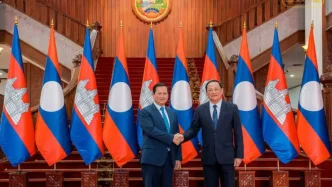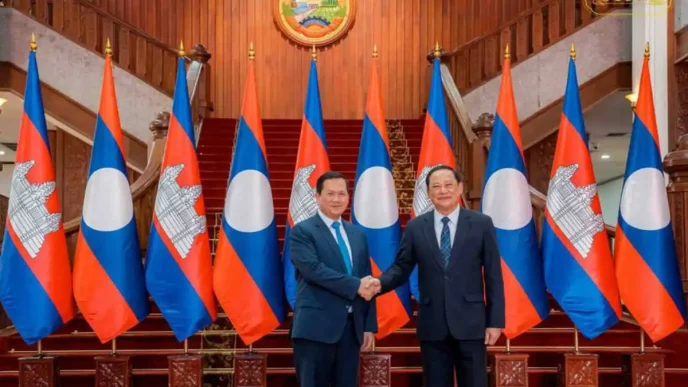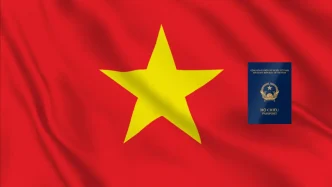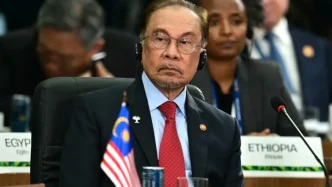In a significant statement on US foreign policy in Southeast Asia, former President Donald Trump has expressed a commitment to working closely with Thailand and Cambodia to address regional challenges and foster stability. Speaking recently, Trump highlighted the willingness of both nations to resolve ongoing issues, signaling a potential shift in diplomatic engagement under a future administration. This development comes at a time when Southeast Asia remains a critical geopolitical arena, with competing influences from global powers shaping the region’s future.
A Renewed Focus on Southeast Asia
Trump’s remarks underscore a renewed American interest in strengthening ties with Thailand and Cambodia, two nations pivotal to the stability of the Mekong region. While specific details of the proposed collaboration remain unclear, the emphasis on partnership suggests a focus on diplomatic dialogue, economic cooperation, and possibly security arrangements. Thailand, a long-standing US ally, and Cambodia, with its complex relationship with Washington, represent strategic partners in navigating the intricate balance of power in Southeast Asia.
The timing of Trump’s statement is notable, as the region grapples with issues ranging from territorial disputes in the South China Sea to economic recovery post-pandemic. Thailand’s economy has faltered, in part due to a growing number of complaints from tourists and tourism boards, including allegations of dual pricing, high in-country costs, and scams involving taxis, scooter rentals, and jet skis. Rising concerns about crime have also contributed to a sharp decline in Chinese tourists visiting key destinations such as Bangkok and Phuket.
Thailand, with its influential position in the Association of Southeast Asian Nations (ASEAN), and Cambodia, a key player in China’s Belt and Road Initiative, offer unique opportunities and challenges for US policy. Trump’s assertion that both countries want to settle hints at a willingness to address unresolved tensions, though the nature of these issues was not explicitly defined in his comments.
Thailand: A Strategic Ally
Thailand has been a cornerstone of US foreign policy in Southeast Asia since the Cold War, with deep military and economic ties. The kingdom hosts joint military exercises like Cobra Gold, and took part in the largest-ever Australian-led military drills, codenamed Exercise Talisman Sabre, which involved more than 35,000 troops from 19 nations. In 2003, the United States designated Thailand a major non-NATO Ally, a designation given by the United States government to countries that have strategic working relationships with the United States military while not being members of NATO.
However, recent years have seen strains in the relationship, particularly following Thailand’s 2014 military coup and subsequent concerns over democratic backsliding. Trump’s pledge to work closely with Bangkok could signal an intent to prioritize strategic interests over governance critiques, a hallmark of his previous administration’s approach.
Beyond security, economic collaboration could be a focal point. Thailand’s economy, heavily reliant on tourism and exports, has faced significant challenges due to global disruptions. A renewed US partnership might involve trade agreements or investment initiatives aimed at bolstering recovery. Additionally, Thailand’s role as a mediator in regional conflicts, such as the ongoing crisis in Myanmar, positions it as a valuable partner for any US administration seeking to counterbalance China’s growing influence in the region.
Cambodia: Navigating a Complex Relationship
Cambodia presents a more nuanced challenge for US diplomacy. Under Prime Minister Hun Sen’s long tenure, the country has tilted increasingly toward China, benefiting from substantial infrastructure investments while facing criticism over human rights and political freedoms. US-Cambodia relations have been strained, particularly over the closure of opposition media and the dissolution of the main opposition party ahead of elections. Trump’s expressed willingness to collaborate with Phnom Penh raises questions about whether a future administration might adopt a pragmatic stance, focusing on geopolitical strategy rather than democratic reforms.
One area of potential cooperation is security in the Mekong region, where Cambodia’s proximity to key waterways makes it a critical player. Issues such as transnational crime, human trafficking, and environmental concerns tied to Mekong River dams could be on the agenda. Furthermore, Cambodia’s hosting of ASEAN summits and its rotating chairmanship in recent years provide a platform for dialogue on broader regional stability. Whether Trump’s overture will translate into tangible policy shifts remains to be seen, but it suggests an openness to re-engage with a nation often sidelined in US foreign policy discussions.
Regional Implications and Geopolitical Context
Trump’s comments must be viewed within the broader context of Southeast Asia’s geopolitical landscape. The region is a battleground for influence between the US and China, with ASEAN nations often caught in the middle. Thailand and Cambodia, while differing in their alignments—Bangkok leaning toward a balanced approach and Phnom Penh more aligned with Beijing—both play crucial roles in shaping regional dynamics. A US commitment to working with these countries could serve as a counterweight to China’s expanding footprint, particularly through initiatives like the Belt and Road.
Moreover, the South China Sea remains a flashpoint, with overlapping territorial claims involving multiple ASEAN states. While neither Thailand nor Cambodia has direct stakes in these disputes, their positions within ASEAN give them influence over collective responses to Chinese assertiveness. A US partnership could bolster ASEAN’s ability to present a unified front, though it risks exacerbating tensions if perceived as overtly anti-China. Trump’s approach, known for its transactional nature during his presidency, might prioritize bilateral deals over multilateral frameworks, potentially reshaping how the US engages with ASEAN as a whole.
Within Thailand and Cambodia, Trump’s statement is likely to elicit mixed reactions. In Thailand, where public opinion on the US varies between appreciation for economic ties and wariness of foreign interference, the government may welcome renewed engagement as a means of diversifying partnerships. However, civil society groups and pro-democracy activists might express skepticism, fearing that a focus on strategic interests could overshadow calls for political reform.
In Cambodia, the government’s response will likely be shaped by its current foreign policy priorities. Phnom Penh has often played major powers against each other to maximize benefits, and a US overture could be leveraged to extract concessions or aid. Yet, any collaboration will need to navigate the deep ties with China, which remain central to Cambodia’s economic strategy. International observers, particularly within ASEAN, will watch closely to see if this signals a broader US pivot back to the region after years of perceived disengagement.
Challenges and Uncertainties Ahead
While Trump’s pledge is a notable development, translating rhetoric into action poses significant challenges. First, the specifics of collaboration remain vague, and past promises of engagement have often faltered due to domestic priorities in the US or resistance from regional partners. Second, any partnership must contend with the historical baggage of US involvement in Southeast Asia, including lingering distrust from the Vietnam War era and more recent criticisms of inconsistent policy.
Additionally, the political landscapes in Thailand and Cambodia are fluid. Thailand faces ongoing tensions between military-backed governance and pro-democracy movements, while Cambodia’s political opposition remains suppressed. Any US initiative will need to carefully balance support for governments with the risk of alienating significant portions of the population. Furthermore, the broader international community, including allies like Japan and the European Union, will likely scrutinize the nature of US engagement to ensure it aligns with shared goals of stability and human rights.
As discussions of US collaboration with Thailand and Cambodia unfold, the potential impact on Southeast Asia’s geopolitical balance remains a critical question. Will this pledge mark a genuine shift toward deeper American involvement in the region, or will it remain a rhetorical gesture amid competing domestic and international priorities? For now, stakeholders across the Mekong and beyond are left to ponder the implications of a renewed US focus on two of ASEAN’s key players.

